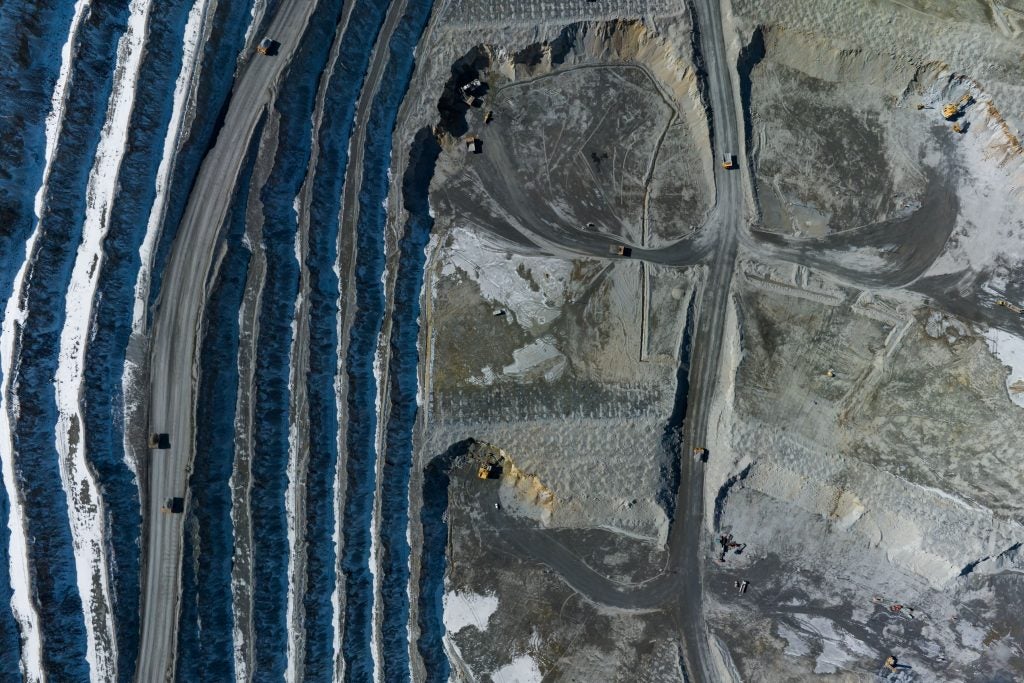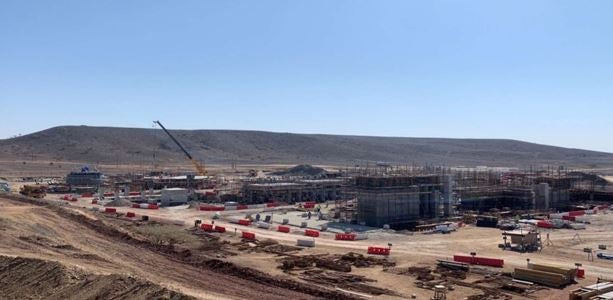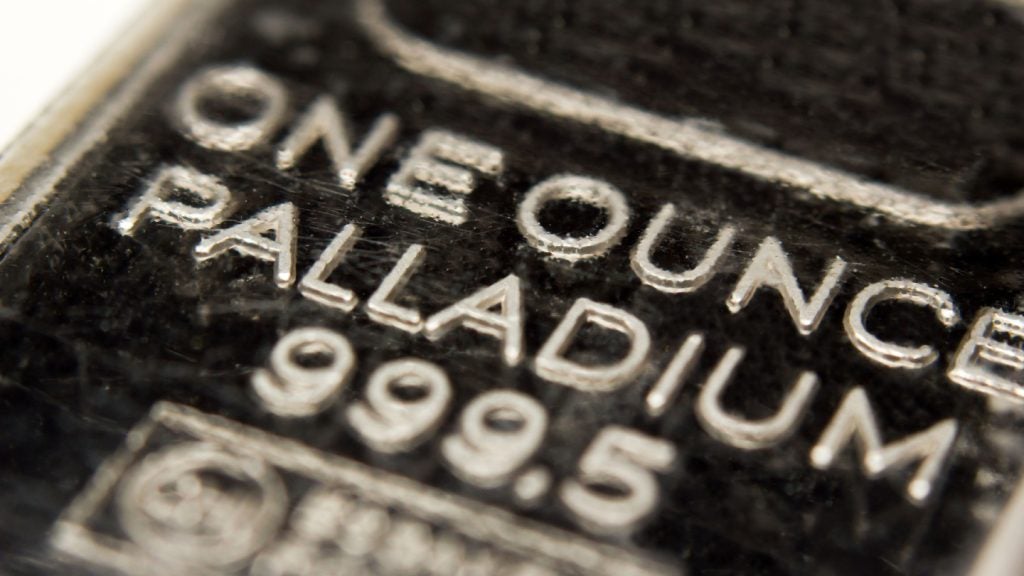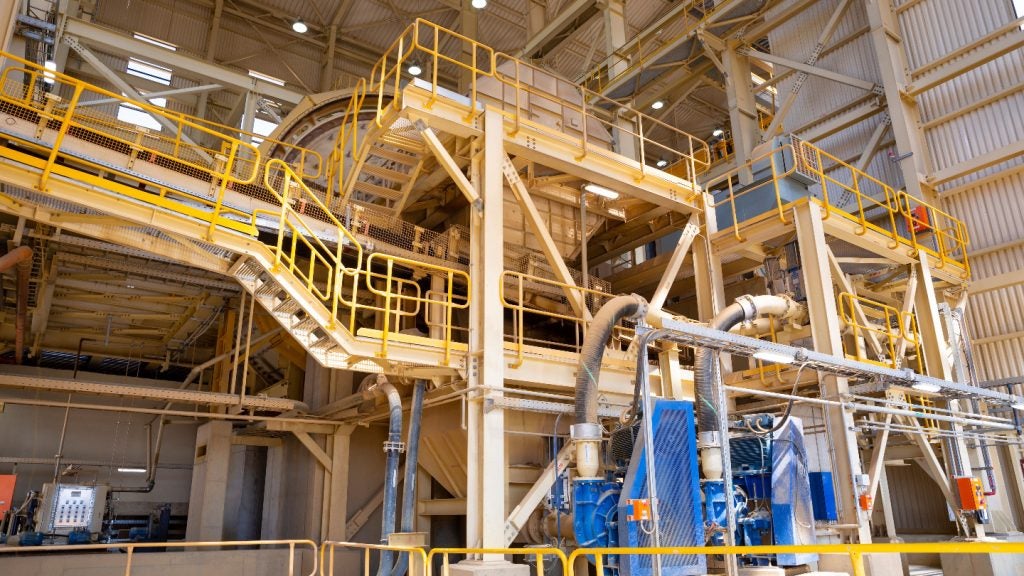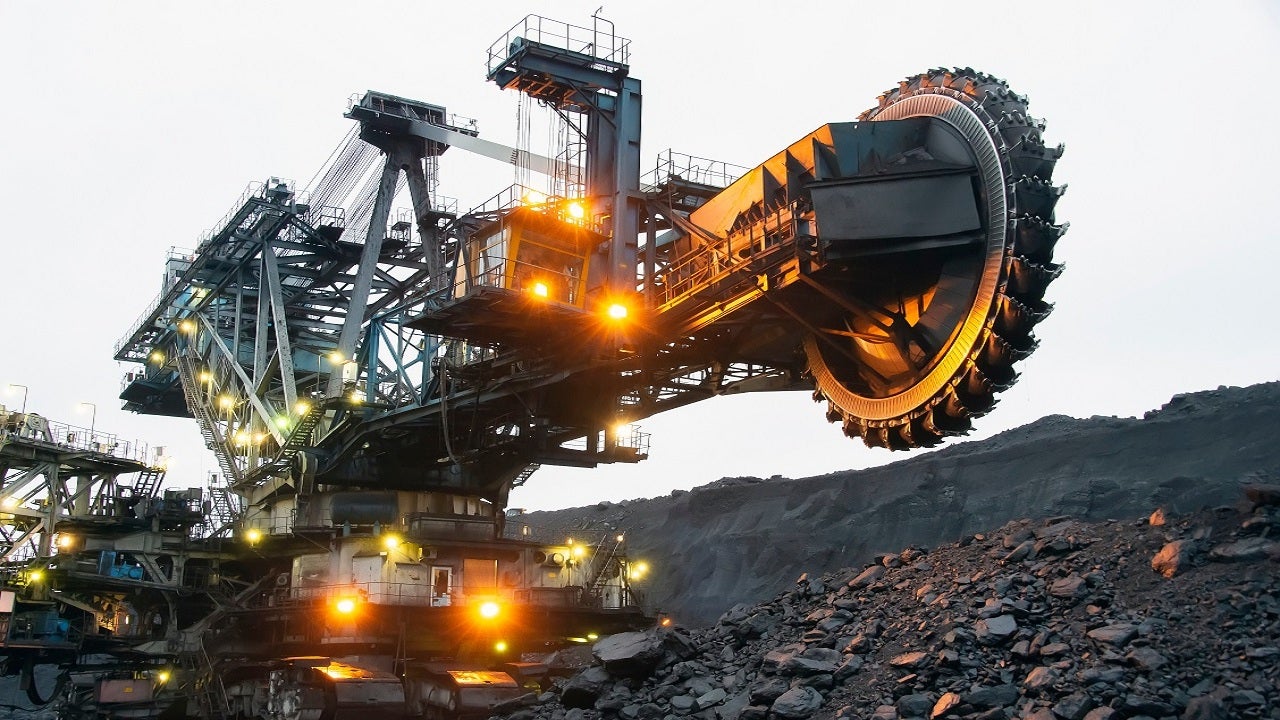
As most of the top metals and mining companies are experiencing disruptions due to the Covid-19 crisis, Mining Technology lists the top ten metals and mining companies in 2020 based on 2019 revenues, along with the outlook for 2020.
The world’s biggest metals and mining companies: Top ten by revenue
1. Glencore – $215.1bn
2. China Minmetals Corporation – $85.86bn
3. ArcelorMittal – $70.62bn
4. POSCO – $55.58bn
5. BHP – $44.2bn
6. Rio Tinto – $43.17bn
7. Vale SA – $37.57bn
8. Jiangxi Copper – $34.28bn
9. Anglo American – $29.87bn
10. Aluminum Corporation of China – $27.3bn
1. Glencore – $215.1bn

Glencore PLC reported a 2.27% year-on-year decline in revenues in 2019, primarily due to a decrease in commodity prices, particularly coal, as well as weak demand for ferrochrome and cobalt in Europe. The company has been focussing on commodities including cobalt and nickel that will help in decarbonising the energy supply.
Glencore has a presence in 35 countries and operates more than 180 mining sites that have been affected in varying levels due to the COVID-19 pandemic. Majority of the company’s sites are, however, operating at normal levels.
Operations at the Raglan and Matagami mines in Canada have been completely halted, while the development of mines in the Democratic Republic of Congo and Kazakhstan has been delayed. The company also announced a capital expenditure reduction of between $1bn and $1.5bn from the original guidance of $5.5bn.
Glencore is a diversified natural resources company based in Switzerland. It is engaged in the business operations associated with metals and minerals, energy products and agricultural products. The company produces and markets more than 60 commodities and operates approximately 150 assets and offices worldwide.
2. China MinMetals Corporation – $85.86bn

China MinMetals’ revenues increased by 13.4% year-on-year in 2019 crossing the 600bn yuan mark for the first time since the merger with China Metallurgical Group Corporation in June 2016. The deal strengthened China MinMetals’ position in the metallic mining sector and helped in expanding its business.
The company is one of six state-owned rare earth mineral producers in China, which supplies approximately 95% of global rare earth minerals for the renewable, consumer electronics and defence sectors. The operations at the Ganxian Hongjin Rare Earth Company unit of the company, however, had to be suspended in 2019 due to pollution issues.
China MinMetals imported copper worth $900m from Chile in 2019 under a 15-year sales agreement with a Chilean copper producer to supply electrolytic copper. The first copper shipment was made in April 2019. Headquartered in Beijing, China MinMetals is engaged in the exploration, mining, smelting, processing and trading of metals and minerals.
3. ArcelorMittal – $70.62bn

ArcelorMittal’s revenues decreased by 7.1% year-on-year due to a decrease in the average selling price of steel. The company achieved a production capacity of approximately 112 million tonnes (Mt) of crude steel in 2019.
ArcelorMittal operates 13 mines, which produced 57.1Mt of iron ore during the year accounting for 52% of the company’s iron ore requirements. The company’s steel shipments for the year increased moderately to 84.5Mt compared to 83.9Mt in 2018.
The Covid-19 pandemic impacted the company’s steel shipments during the second quarter of 2020 although the performance of the steel segment improved by 7.6% compared to the previous quarter. The company has taken a number of steps to mitigate the impact of the pandemic by reducing salaries of senior management, utilising unemployment schemes, and introducing temporary lay-offs.
ArcelorMittal’s 2020 guidance predicts a decline in steel shipments compared to 2019. Iron ore shipments are expected to decline by 5% to 10% year-on-year. The company has reduced capital expenditure plans from $3.2bn to $2.4bn for 2020.
ArcelorMittal is a Luxembourg-based steel manufacturer with production facilities located in 18 countries. The company supplies products to its customers in 160 nations worldwide.
4. POSCO – $55.58bn

POSCO’s revenues declined by 0.9% in 2019, mostly due to a decline in demand, increase in raw material prices, and protective trade policies. Its subsidiary POSCO International achieved the highest operating profit for the company contributed by the gas fields in Myanmar.
The Covid-19 pandemic slightly impacted the company’s operating profits in the first quarter of 2020, although the overall sales increased by 7.2%. POSCO secured KRW3.3tn ($2.5bn) in January 2020 to finance its debt, which played a key role in improving its liquidity in the current pandemic situation.
The Covid-19 pandemic is anticipated to create harsh market conditions as the majority of the steel-using industries such as automotive and construction have been impacted leading to a drop in demand and prices. POSCO plans to ensure a flexible production schedule and implement cost-saving measures in addition to revaluating its investment priorities to deal with the impact of the pandemic.
Headquartered in Pohang, South Korea, POSCO is one of the world’s biggest steel manufacturers. The company’s production and sales network extends across 53 countries worldwide.
5. BHP – $44.2bn

BHP recorded a 3% year-on-year increase in revenues in 2019, driven by higher realised prices for iron ore, petroleum and metallurgical coal. Higher sales from Western Australia Iron Ore mining operations also contributed to the increase in revenues, while also partially offsetting the lower average realised prices for copper and thermal coal.
Multiple projects in progress at various mines across the world reached major construction milestones during the year. Construction of nickel sulphate plant at the Kwinana Nickel Refinery was commenced in 2019. The plant will enable the company to produce battery-grade nickel. The Escondida Water Supply Expansion project will help in increasing production levels at the Escondida mine and reduce dependence on groundwater resources. Optimisation of the development plan for the Resolution Copper project also progressed with the final environmental impact statement (EIS) expected by December 2020.
The Covid-19 impact on BHP’s operations until June 2020 was estimated at $348m, attributed to lower production volumes, temporary shutdowns and additional expenditure incurred at operating assets.
Headquartered in Melbourne, Australia, BHP is a global natural resources company engaged in the exploration and production of oil and gas, copper, iron ore, and coal.
6. Rio Tinto – $43.17bn

Rio Tinto reported a 7% year-on-year increase in revenues in 2019, attributed to higher prices of iron ore, offsetting lower copper and aluminium prices. The company made certain key investments during the year in future growth projects including $1.5bn in the Kennecott copper mine in Utah, US, to extend the mine life to 2032.
The company is also investing $749m at the Greater Tom Price operations in Pilbara, Western Australia, to mine new and existing deposits and sustain iron ore production capacity. Other investments approved during the year were $463m in the Zulti South project in South Africa and $302m in the Resolution Copper project in Arizona, US. Commissioned in 2019, the $1.9bn Amrun bauxite mine in Queensland, Australia, will replace the production from the depleting East Weipa mine.
Rio Tinto’s operations were not disrupted during the first six months of 2020 due to Covid-19 with the production and project development remaining on schedule. The company, however, reported a 12% decline in revenues compared to the corresponding period in 2019. Rio Tinto also expects commodity supply disruption and decline in demand for copper and aluminium over the next few quarters. The company changed its product mix to focus on the production of concentrates according to market demand. Capital expenditure for 2020 has also been reduced from $7bn to between $5bn and $6bn.
Rio Tinto is involved in the exploration, mining and processing of mineral resources. The company has an operational footprint in 35 countries across six continents.
7. Vale SA – $37.57bn

Vale reported a 2.7% increase in revenues in 2019, driven by higher sale prices of iron ore and iron ore pellets despite lower nickel and copper sales volumes. The failing of the tailings dam at the Corrego do Feijao mine in Minas Gerais had a significant impact on the company’s financial performance resulting in expenses of $7.4bn, although the full extent of the impact is yet to be ascertained.
The incident resulted in 270 fatalities and released some of the tailings into the Paraopeba River causing property and environmental damage. Vale responded by mobilising hospitals, providing water supply, and offering temporary relocation to those affected. It also performed infrastructure works and made financial contributions to those areas affected by the mining suspension.
The Covid-19 pandemic had no major impact on Vale’s operations, although lower volumes and depressed average realised prices led to a 17% decline in revenues in the first half of 2020 compared to the corresponding period in 2019. Vale has implemented certain measures to mitigate the impact of the pandemic including ramping down of production at the Voisey’s Bay mine and postponement of maintenance plans for the coal processing plant in Mozambique. The company has revised its capital expenditure from $5bn to $4.6bn in 2020 and is expected to further revise the figure based on the evolving changes in the market.
Headquartered in Rio de Janeiro, Brazil, Vale is the world’s biggest producer of iron ore, pellets, and nickel. The company has a presence in approximately 30 countries.
8. Jiangxi Copper – $34.28bn

Jiangxi Copper’s 2019 revenues increased by 11.64% compared to 2018. Although ore production was impacted due to extreme weather conditions, strikes, US-China trade war and other factors, copper smelting capacity reached peak capacity during the year.
Major projects completed during the year included phase two of the 350,000 tonnes per annum (tpa) copper rod project of Jiangxi Copper (Guangzhou) Copper Products Company and the tailings pond project at Dexing Copper Mine 5. The underground expansion of the 8,000 tonnes per day (tpd) JCC Yinshan Mining Company project also progressed in 2019. The company completed the acquisition of Kazakhstan tungsten mine project during the year, which is expected to become the world’s largest tungsten mine when operational.
Jiangxi Copper expects the Covid-19 pandemic to impact the consumption of copper in 2020. It is planning to implement countermeasures, ensure steady production and track the prices of bulk commodities to minimise the pandemic’s business impact.
Headquartered in Guixi, China, Jiangxi Copper is engaged in the production of copper, gold, silver, lead and other minerals.
9. Anglo American – $29.87bn

Anglo American recorded an 8.3% year-on-year increase in revenue in 2019. Production ramp-up at the Minas-Rio iron ore operation in Brazil was a major contributor to the company’s financial performance. The final product from the Minas-Rio mine includes 67% Fe grade content, which is higher than the industry average.
Key milestones were achieved at the Quellaveco copper mine, which is on schedule for first production in 2021. Quellaveco is expected to produce 300,000tpa of copper for the first ten years. The Aquila project was also approved during the year to extend the life of the Capcoal underground hard coking coal mine in Queensland, Australia, until 2028. The extension will enable the company to achieve an average annual saleable production of 3.5Mt of premium-quality hard coking coal from early 2022.
Anglo American has revised its production guidance for the majority of the mineral commodities it produces, including diamonds, platinum, palladium, iron ore, and thermal coal, due to the Covid-19 pandemic.
Headquartered in London, UK, Anglo American is a producer of diamonds (through De Beers), copper and platinum group metals (PGMs) with operations across Europe, southern Africa, North and South America, and Australia.
10. Aluminum Corporation of China – $27.3bn

Aluminum Corporation of China 2019 revenues increased by 5.27% year-on-year, driven by its trading segment which is involved in the trading of alumina, primary aluminium, non-ferrous metals, and coal products. The company’s total alumina production in 2019 accounted for approximately 21.9% of the total domestic production in China.
The Yinxingyijing coal mine located in the Ningxia Autonomous Region was put into operation in January 2019. Key milestones were reached at the Boffa bauxite project in Guinea, which was put into operation towards the end of 2019. The first bauxite shipment to China was made in February 2020.
Global demand for primary aluminium declined steadily in 2019, while the COVID-19 pandemic is expected to further weaken the demand, says the company which is actively responding to the impact of the pandemic by adjusting its product portfolio, inventories and marketing strategies. The capital expenditure for 2020 is expected to be RMB13.9bn ($1.99bn), subject to review based on the impact of Covid-19 further.
Headquartered in Beijing, Aluminum Corporation of China is a leading producer of aluminium. The company is primarily engaged in the exploration and mining of bauxite and coal as well as aluminium production and power generation.


